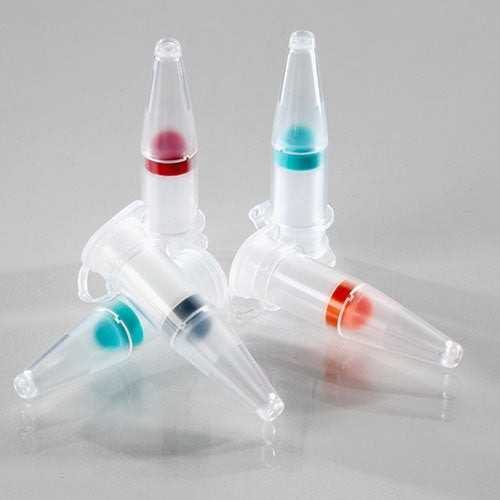Description
Nanosep centrifugal devices are formed out of two components, a filtrate receiver tube and a sample reservoir containing the membrane. These component parts are constructed from low protein binding polypropylene that also offers chemical compatibility for aggressive solvents. Instead of using O-rings or adhesives that could add extractables or bind precious biomolecules the product is constructed using an ultrasonic welding technique.
These centrifugal devices are very simple to use. The sample to be processed is pipetted into the upper reservoir of the device. The device is placed into the appropriate centrifuge (taking care that the rotor is balanced) and spun. Filtrate can be recovered by removing the lower reservoir of the device and using a pipette or pipette tip to remove the liquid. Nanosep centrifugal devices can be used with sample volumes of up to 500 µL, and fit in standard centrifuge rotors that accept 1.5 mL tubes.
Ensures rapid processing of samples
Low protein binding Omega membrane for ultrafiltration applications
A wide range of MWCOs, color coded for easy identification
Constructed of low-binding polypropylene
Ultrasonically welded seals prevent bypass or seal failure
Fits standard centrifuge rotors that accept 1.5 mL tubes
Nanosep centrifugal devices with Omega membranes can be used in a number of ultrafiltration applications including; the concentration, purification, and desalting of peptides, proteins, oligonucleotides, DNA, and RNA. They can also be used in the isolation of DNA from agarose gel slices, and to separate proteins, oligonucleotides, and RNA from acrylamide gels. Click here for the Calibration Kit, Temperature by A&D
Omega ultrafiltration membranes are manufactured from low protein binding modified polyethersulfone minimizing the possibility of sample losses due to non-specific binding. A wide selection of molecular weight cut-off (MWCO) options are available and devices are color coded for easy membrane selection.
Pall supply users with a Nanosep concentration selection guide. The guide allows users to concentrate a sample to the concentration of their choice. This is achieved by selecting a volume of buffer solution to place in the device filtrate receiver tube prior to sample processing. The total volume of liquid in the device determines the final retentate volume.
Click here for Most Common Types of Lab Mixing Equipment
Specifications
| brand | PALL |
|---|---|
| effective-filtration-area | 0.3 cm² |
| filter-media | modified polyethersulfone |
| list-price | 435.00 |
| manufacturer-part-number | OD100C34 |
| material | Polypropylene |
| maximum-force-g | 14000 |
| operating-temperature | 40 °C |
| part-number | OD100C34 |
| quantity-per-pack | 100 |
RETURNS, EXCHANGE & REFUNDS
Estimate shipping
Payment & Security
Your payment information is processed securely. We do not store credit card details nor have access to your credit card information.

